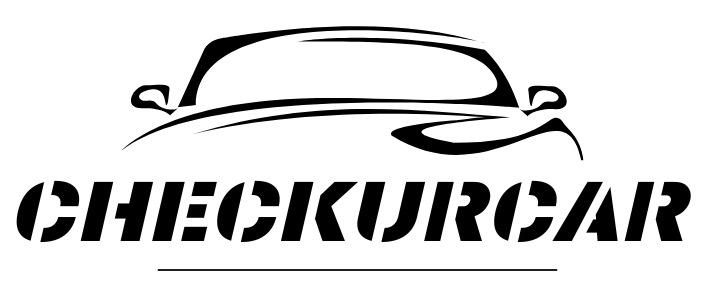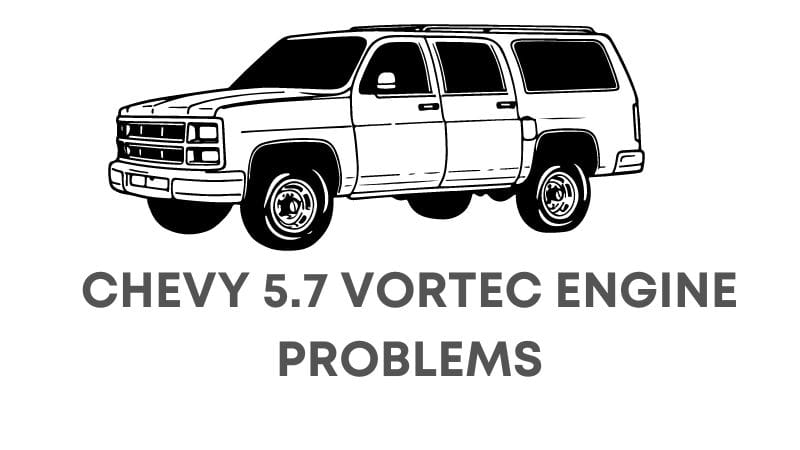In 1991, the Chevy 5.7 Vortec engine was introduced. It preceded the official LS engine, the LS1. Actually, this 5.7 Vortec is more dependable than its previous model. Since these engines are reliable, you won’t experience any severe problems.
But, as we all know, nothing in the world is without problems. However, what are the Chevy 5.7 Vortec engine problems? In a word, though it’s a reliable engine, it has some issues. Below, we will discuss some common Chevy 5.7 Vortec engine problems and solutions.
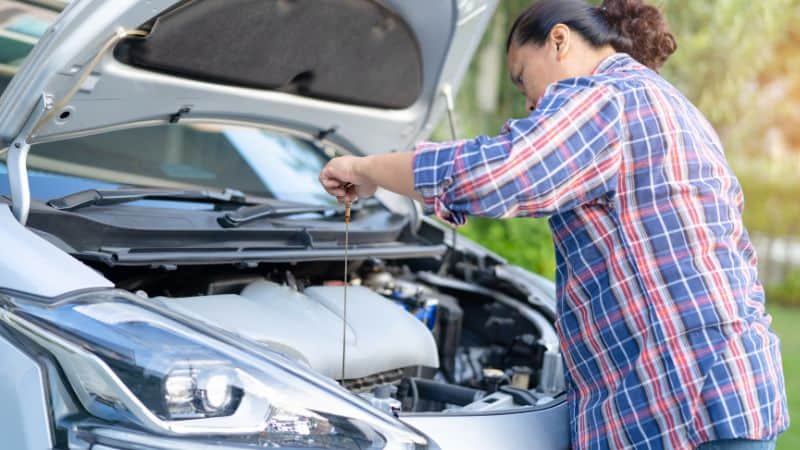
Chevy 5.7 Engine Reviews
The 5.7 Chevy engine debuted in the 1967 Chevrolet Camaro. The following year, it was held in Nova. Due to its immense popularity, by 1969, Chevrolet had included it as a standard engine in every car. In the 1970s, the engine became so popular that it became an export product. By then, GM ran the engine in Canada, Australia, and other countries. That was the 5.7 until the early 1980s, when it changed very little.
The Chevy pickup features a high-powered 5.7 Vortec V8 internal combustion engine. General Motors introduced it in 1996 and used Vortec as a trademark on engine pistons. Generally, it’s a 5.7-liter engine with a displacement of 350 cubic inches. For over 40 years, this engine has been installed in numerous General Motors vehicles. Although it was discontinued in GM vehicles in 2003, GM still manufactures the 5.7 Chevy engine.
5.7L Vortec Engine Specifications:
According to the engine’s factory specs, it has 255 horsepower and 330 ft.-lbs. of torque. This engine’s carbureted version boasts a higher power output of 290 horsepower and 375 ft.-lbs. This enhancement in torque is due to the dual plane intake manifold, a 670 cfm carburetor, and an HEI distributor.
- P/ N 12691673
- Power 255 hp, 4,600 rpm/ 330 lb.-ft. Machine Type Chevy Small- Block V-8
- Relegation: 350
- Bore x Stroke( in.)4.000 x3.480
- Block Cast- iron with 4-bolt heads
- Connecting rod greasepaint essence
- Crankshaft: Forged steel
- Camshaft Type: Hydraulic Comber
- Camshaft Duration(@.050 inch) 191° Input/ 196° Exhaust
- Cylinder Heads: Cast Iron
- Piston: Hypereutectic aluminum
- stopcock Lift( in).414 Input/.428 Exhaust
- Compression rate: 9.41 nominal
Chevy 5.7 Vortec Engine Problems:
Generally, the 5.7 Vortec engine experienced problems like head gasket failure, PCV valves, spark system, etc. Please read this article attentively to know more about the situation. Then, we’ll top it off with our overall LT1 engine reliability and longevity. You can also learn about these issues from the Chevy 5.7 Vortec engine problems forum. Let’s discuss its problem below:
- Low Oil Pressure
Another prevalent issue with the 5.7L Vortec engine is low oil pressure. The oil pump controls oil pressure, and any problem with the oil pressure sensor can cause low oil pressure. Engine knocking, misfires, and failure are all symptoms of low oil pressure.
- Fuel Injection System
Any fuel injection system issue can result in poor engine performance and even failure. The fuel injection system consists of fuel pumps, fuel injectors, and fuel pressure regulators. Moreover, engine running issues, misfires, consuming more fuel, and running pretty sluggishly are fuel injection system problems.
- Intake Manifold Gasket Failure
The standard issue for a 5.7L Vortec engine is intake manifold gasket failure. This gasket seals the intake manifold to the engine block to stop air leaks. Problems like coolant leaks and engine misfires can arise when the gasket fails. Gasket failure signs are coolant leaks, engine misfires, white smoke, and overheating.
- Camshaft And Lifter Problems
The camshaft and lifter are essential to opening and closing your engine valves. However, problems with these elements can lead to engine malfunctions, reduced engine performance, and, worst, machine failure. Keeping these parts in top condition ensures the engine’s longevity and avoids breakdowns.
- Ignition System Problem
Accordingly, if you notice 5.7 Vortec ignition coil symptoms, you should be aware. This symptom ignites the fuel and air mixture in the engine cylinders. But if something goes wrong with it, you can say goodbye to your engine. Imagine the frustration of engine misfires, reduced engine performance, and engine failure, all due to a faulty ignition system.
- Exhaust System Problems
The Chevy 5.7 Vortec engine exhaust system removes exhaust gasses from the engine. Any problem with the exhaust system can reduce engine performance and even cause engine failure.
Solution Of Chevy 5.7 Vortec Engine Problems
There are many common problems you can find. Have a look:
Intake Manifold Gasket Failure Fix
To fix the Intake Manifold gasket failure, you should replace it. Furthermore, it would help if you replaced the top and bottom gaskets with it to prevent further failure. Inspecting the intake manifold for wear or damage, which can be needed for replacement, is essential.
Low Oil Pressures Solution
First, check the oil level to fix the low oil pressure problem and ensure it’s correct. It would help if you inspected the oil pressure sensor and pump without it to avoid problems. After checking it, if you see there is a faulty component, you should replace it.
Solution To Fuel Injection System Problem
You should fix the fuel injection system problem by checking the fuel pressure. Even if you ensure it’s within the manufacturer’s specifications, you can avoid fuel injection problems. Otherwise, it would help to inspect a fuel pump and regulator to avoid low fuel pressure. When you find damaged or clogged fuel injectors, you should replace them immediately.
Solution To Camshaft And Lifter Problems
Checking them for wear or damage is the first step toward solving issues with camshafts and lifters. Thus, if they become worn or broken, they should be replaced. Additionally, it’s advised to look for wear or damage on the rocker arms and pushrod that may need replacement.
Solution For Exhaust System Issues
Solving exhaust system problems involves inspecting the exhaust manifold for cracks or leaks. Primarily, it is necessary to replace the exhaust manifold if it’s damaged. Hence, checking the exhaust pipe, catalytic converter, and muffler for damage or clogs is best. The reason is that you may require replacement.
Solutions To Ignition System Problems
To troubleshoot ignition system problems, check the spark plugs, ignition coils, and spark plug wires for wear or damage. Replace all of these parts if any of them are malfunctioning. Checking the distributor cap and rotor for wear and replacing them as needed is also advised.
Common 5.7 Vortec Distributor Problem
If there is an issue with your distributor, it will typically show up as one of the following:
- The engine will not start
- Engine is misfiring
- Engine losing power
- The engine is operating roughly.
5.7 Vortec Ignition Coil Symptoms:
A malfunctioning ignition coil could cause several symptoms. Unfortunately, if your car experiences any of the below problems, you may have a faulty ignition coil. Let’s explore the symptoms:
- Engine misfire
- Rough idle
- Exhaust backfiring
- Fuel leak
- Difficulty starting the engine
- Loss of vehicle power, especially on acceleration
- Bad fuel economy
- The check engine light is on
- Expenses hydrocarbon emissions
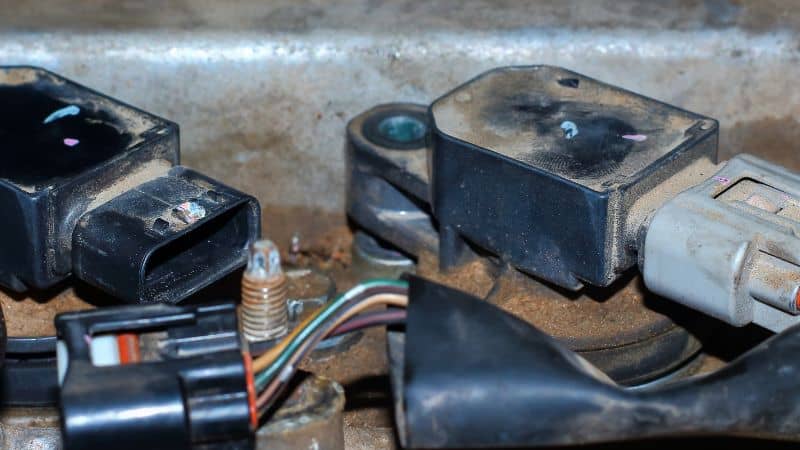
How Do I Do the 5.7 Vortec Ignition Coil Test?
Ignition coil testing can be dangerous if you don’t perform correctly. If you need to learn how to test the ignition coil on 5.7 Vortec, you should consult with a qualified professional. Here are the steps to check an ignition coil on a Chevy Silverado 5.7:
- Locate the ignition coil. It is usually found on top of the engine, close to the distributor.
- Unplug the spark plug wire from the ignition coil.
- Connect a spark tester to the high-tension output terminal of the ignition coil.
- Start the engine and check the spark tester. An ignition coil that functions properly will produce a robust and steady spark.
- On the other hand, if the spark is weak or nonexistent, the ignition coil is broken.
- If the spark tester shows no spark, use a multimeter to check the ignition coil resistance. A resistance of between 100 and 200 ohms is ideal.
5.7 Vortec Ignoticedion Coil Replacement:
The three essential components of an engine are spark, fuel, and air. Therefore, if your 5.7 Vortec runs rough or doesn’t start smoothly, there is a problem you should replace. Here are some easy steps to have a look at:
Tools Required
- Socket set with extension and ratcheting handle for cleaning coil packs
- Spark plug socket
- Magnetic bowl
- Compressed air (best for leaves)
Be sure to purchase spark plugs with the correct gap for your 5.7 Vortec. They can be .40 or .60 since V6 and V8 engine models use different coils.
Step 1 -Put off the wire from the coil
Pull the cable boot out of the coil by giving it a half-turn. Use the boot instead of pulling on the cable. That is the purpose of it.
Step 2 – Remove the coil
The coil should have two 7mm bolts holding it on either side. To avoid losing them, store all bolts and parts securely. Once the coil bolts are out, the coil should come off immediately.
Step 3 -Eliminate the spark plugs
Remove the spark plug wire by twisting it around the end of the plug. After doing it, loosen and remove the spark plug. In particular, if you out the spark plug, see it at the end and compare it to the chart above. Ultimately, you can gain insight into how well your engine is performing. You may gain insight into how well your engine is performing from what you see at the end of it. Apply the same technique to the remaining spark plugs.
Step 4 – Install new coils and spark plugs
Once the new spark plugs are inserted, torque them to 11 lb-ft. After that, use your 7mm bolts to fasten your coil packs back on and repeat the removal process. Reinstall the plug wire on the coil by turning it off by half. Start the engine and take a test drive after putting everything back in its proper place.
6.2 LT1 Engine Problems:
Adequately, the 6.2L EcoTec engine was released in 2014. Manufacturers released it as an alternative to GM’s performance vehicles and Silverado and Sierra trucks. Reliability is critical when powering some of GM’s most expensive cars. Unfortunately, this 6.2 LT1 also has some common and severe problems. See below:
- Carbon build-up
- Falling lifter / bent push rod
- A8 transmission shakes or vibrates
Other minor common problems:
- Fuel Pump/Fuel Injector
- Engine mount
- bolt manifold
- Lower intake manifold gasket
FAQ (Frequently Asked Questions)
Q. Is the 5.7 Vortec engine reliable?
Yes, of course, it’s a highly reliable engine. Most importantly, for people looking for a long-lasting and well-designed vehicle, it’s one of the perfect for them. People regularly use them for 300,000 miles.
Q. Is the 350 Vortec a good engine?
Yes, it’s a good engine, with the 265, 283, 302, 307, and 327 being variations based on different bores and strokes.
Q. Why are Vortec engines so good?
The Vortec engine is one of the most iconic and popular engine designs offered by General Motors (GM). Mainly, this engine provides excellent performance and strength while decreasing fuel and maintenance costs.
Final Word
Finally, the Chevy 5.7 Vortec is a popular and reliable engine with problems like any other engine. Hence, if you notice any of these problems, don’t delay. The reason is that you have to spend more money to fix it. After seeing any of the above issues, try to fix them yourself with our tricks. But you should call a qualified mechanic to help fix the Chevy 5.7 Vortec engine’s big problems. Ignoring these problems can lead to serious engine problems and failure. Thanks for staying with us. Happy journey.
